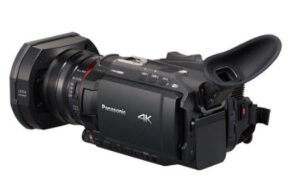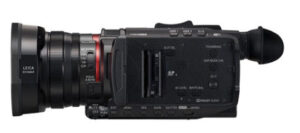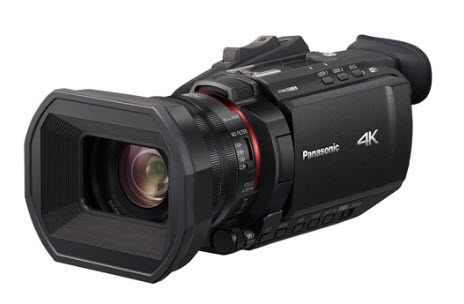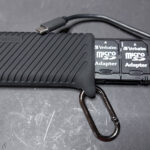Back when I started Australian Camcorder magazine (it was 2007), the major manufacturers of the time – Panasonic, Canon, Sony and JVC – all had numerous models of camcorders available in both consumer and professional guises.
Indeed, to be able to review them all for each month’s paper edition and website of the magazine I needed 3 extra freelancer writers who had the necessary knowledge and experience.
Fast forward to today, and that is far from the situation. If you just take Panasonic as an example, the company has a total stable of 7 models available ranging from the budget priced HC-V800GN (AUD$899) to the “pro” HC-X2GC (AUD$5499). (For comparison Sony has 4 ranging from AUD$349 to AUD$2124 and Canon has 6 – AUD$1890 to AUD$7599). JVC left the Australian consumer market long, long ago as has Hitachi and Sharp. Australia’s very own Blackmagic Design is going from strength to strength with its Pocket Cinema Cameras, but I feel these are outside the prime market that Panasonic et al go for at this level of camera being reviewed.).
Out of the 7 Panasonic models 3 are consumer and the rest are at the enthusiast / professional level, such is the dominance of the smartphone and to a lesser degree, the mirrorless cameras like the Panny LUMIX or Sony alpha series.
Which is a crying shame, as using a model like the latest I have received from Panasonic, the HC- X1500 I suspect would sway a lot of shooters back to the dedicated camcorder fold in a split second.
(Not the least would be the fact that whilst Panasonic has it listed at a retail price of AUD$2999 most of the major shops have it at AUD$2500 which makes it a bargain for what you get).
So, what do you get?
For starters you get an eminently portable and capable camcorder with a host of features, many of which are inherited from the HC- X1500 bigger brothers.
Of course, the most important part of any camera is the glass, and the HC-X1500 has nothing less than a Leica 25mm wide angle lens complete with a 600mm optical zoom (that’s 24x) at 4K resolution and 48x at full hi-def.
The lens is capable of f/1.8 to f/4 and the sensor picking up the light is a 1 /2.5” MOS unit with an effective 8.29 megapixels.
Features
Normal these days is automatic face detection, and Panasonic has added skin tone recognition to aid tracking when the face moves. This is performed without any interruption to the shooting.
Also standard in models like the HC-X1500 is optical image stabilisation (O.I.S.) but it has also an incorporated electronic component along all 5 axes to remove handshake.
Back when I started Australian Camcorder, live streaming was a pipe dream, but here we have the functionality built right into the camera with direct connection to Facebook, YouTube and so on, allowing live streaming of events, concerts, meetings and of course news crosses. Even a solo operator could do this as the camera can be controlled via Wi-fi and a smartphone or tablet.
There are numerous recording modes too with a high bit rate of 200Mbps for 59.95 / 50p video with HEVC and 120/100 fps super slo-mo with 4:2:2 10-bit recording. You can record in either MOV, MP4 or 720p AVCHD.
To aid in cooling, Panasonic has used a new fan type in the HC-HC-X1500.
If you are a GoPro fan you need my special 60+ page e-Magazine specifically dedicated to GoPros, accessories, how-tos, tutorials, hints, tips, reviews and more. You can see the details here.
Physical Characteristics

Moving from the front of the camera to the rear, the HC-XC1500 has a manually operated lens cover that flips open on the press of a lever integrated into the lens hood.
There are two lens rings that can be set for any pair combination of either focus, zoom or iris, and just behind these is a 4-stage switch for the built in ND filter system (CLR, ¼, 1/16, 1/64).
On the top of the body is a cold shoe mount and a threaded hole for adding accessories, and at the rear is of course the viewfinder for which Panasonic does supply an add-on eyecup and can be extended by a centimtre or two and tilted upwards.
Along the left-hand side of the body sits the flip out and rotating 8.88cm (3.5”) LCD screen, under which lie buttons for Thumbnail, Display / Mode Check, On/Off, AE Level and White Balance. Here there are also a pair of slots for SDHC/SDXC memory cards under a transparent flip back cover.

Along the base of the left side are further buttons for Exit, Menu, Iris, Gain, Shutter Speed and to set the camera to either Auto or Manual operation. Forward of these is a pushable scroll wheel useful for menu navigation on the fly (as against using the touch screen).
The right-hand side of the HC-X1500 is sparse in comparison with ports for Mic (there is also a built-in mic of course), Remote and USB under flip up covers for each, as well as a handgrip.
Finally the rear of the camera has the battery release and HDMI and headphone ports, each also under individual flip up covers. The battery mounts underneath the camera and is charged from an externally supplied charger that needs to be plugged into the camera.
More below …
This was on a VERY windy day as you will hear. (And see; I was nearly blown over a couple of times). This footage shows the optical zoom functionality and the results of the auto ND filters kicking in when appropriate. Considering the amount of wind pummelling me, the OIS did an admirable job of making my footage half decent.
Location is Bunbury Outer Harbour in SW Western Australia. The dog is our beloved DougieDoggy (and you get a brief view of Jacqui, my wife)
In Use
I loved the ergonomics of the HC-X1500; I can never be convinced that any mirrorless or dSLR camera can be superior when shooting video. With the right hand through the hand grip, thumb on the start/stop button and the left hand curled over the barrel of the lens and on the lens rings, it is such a natural way of doing things and far less physically tiring than any other style of camera, even with my donkey post-op carpal tunnel pain.
The light weight (<1.5Kg without the optional handle) of the HC-X1500 aids in this of course.
If you add the optional handle, then you have almost the perfect run ‘n’ gun camcorder with the only thing missing I can think of being a built in LED light, but frankly, the way that technology has gone lately, adding something like a Zhiyun Fiveray M20C light to the cold shoe negates this issue very easily.
Sure, it doesn’t have XLR ports and the smaller sensor does have some low light issues, but the HC-X1500 is nonetheless a very impressive package, and as mentioned, at the current knock down price available is simply brilliant in my opinion.










I’m a veteran of Panasonic’s 3-chip pro and producer camcorders, though I sold the last of mine last year. Yes, clearly the camcorder is a superior shape and ergonomic design for video, particularly run and gun shooting, with a real mic mounted on top.
What I didn’t like is the tiny, tiny image sensors, which just got worse once they moved to a single chip. Compare the video quality of the X1500 to, for example, the lower cost FZ2500 with it’s 1″ chip! Why not a camcorder version of that at the X1500 price point?